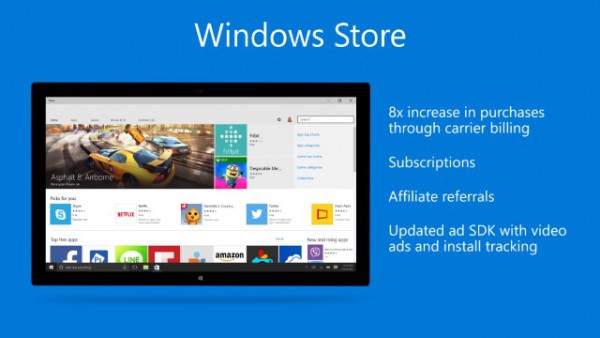Project Westminster is Microsoft's attempt to boost Windows 10 app numbers

What do you do if you need to encourage developers to produce more apps for your platform? Make it much, much simpler of course. This is the problem Microsoft has faced for some time now, and in a bid to address the issue it hopes Project Westminster is the answer. With the launch of Windows 10 looming, there's never been a better time to be seen addressing the so-called app-gap.
We learned a little about Project Westminster at Build 2015 earlier in the year -- it basically makes it easy to convert existing web apps into Universal Windows Apps that can run on phones, tablets, and computers. Microsoft is also pushing other projects -- Astoria, Islandwood, and Centennial -- for converting Android and iOS apps, as well as traditional Windows applications into universal apps. Is it enough?
One of the fears with all of these tools is that while they may serve to increase app numbers, they will do nothing to address the small number of apps designed specifically for Windows. As we have seen on mobile platforms, it's very easy to convert a website or web-based service into an app, but web wrappers do not offer anywhere near the same experience as dedicated apps written from the ground up.
Will we see a raft of quick-and-dirty, oh-sod-it-that'll-do conversions popping up in the Windows Store? It's clearly hard to say at this early stage, but it's a very real risk.
With Windows 10 we can see Microsoft venturing into new territory. This is not just a new version of Windows, it's a bid to create a complete ecosystem, to create a Windows experience. Windows 10 is going to be free, we all know that. But part from a few tweaks, nips, and tucks, there isn't really all that much incentive to upgrade from earlier versions. People will -- because it is free -- but Microsoft needs to get the apps in place to complete that experience it is striving for.
Writing on the Windows Blog, Microsoft engineer Kiril Seksenov talks at some length about the benefits of the four platform bridges, focusing mainly on Project Westminster.
Project Westminster embraces "the way of the web" by giving you the opportunity to publish an app while continuing to use your tools, developing your code and deploying to the host you desire. Just enter your app's start page URL and define the app's scope of URLs in the app manifest to create a Universal Windows Platform app. Continue with platform integration by pushing code to your servers, feature detecting for and directly calling Universal Windows APIs.
Microsoft stresses that Project Westminster is "agnostic to the developer workflow that you've chosen", promising that developers "can keep using your favorite code editor, source control and hosting service while developing your website".
But people, all too often, opt for the easy route. We may see app numbers swell in the coming months, but we could also see a growth in the number of low quality web apps quickly converted just for the sake of it. Let's just hope Project Westminster doesn’t turn out to be more like Project Westmonster.